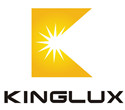| TEL:
+86 510 82123195
|
| Mobile: |
+86 18168862789
|
| FAX:
+86 510 84602998
|
| Email: |
info@kingluxlens.com
|
| MSN:
kingluxlens@hotmail.com
|
| Skype:
kingluxlens
|
| Q Q:
2852820700,2852820701,2852820699
|
|
|
| |
Company News
|
Current Location: Home >
News >
Company News
|
 |
|
Different lenses of different materials will have different effects on the picture. As far as the projector lenses on the market are concerned, they are mainly divided into two types: glass lenses and resin (also known as plastic) lenses.
Glass lenses
1. Good heat resistance.
2. The glass lens is made by single grinding, with good processability and high precision.
Resin lens
1. Compared with the glass lens, the heat resistance is insufficient, and it will deform at high temperature.
2. The resin lens is manufactured by precision injection molding with abrasive tools, and its surface accuracy reaches micron level, but it has high requirements for processing environment and other conditions, and its processing performance is unstable compared with glass lens.
In terms of physical properties, glass is better than resin on the whole, but it is not ruled out that some high-order resin lenses have the same performance as glass lenses. In addition to pure resin lens groups and pure glass lens groups, there are often lens groups with two complementary materials.
The glass lens consumes a lot of manpower and time in the grinding process, resulting in a slow increase in productivity and yield; Because the resin lens has a low melting point, it is easy to form and manufacture in large quantities, and the cost is also easy to control, so it is very attractive for products with low performance requirements and price orientation. This is why most low lumen micro projectors on the market use resin lenses.
|
|
|


